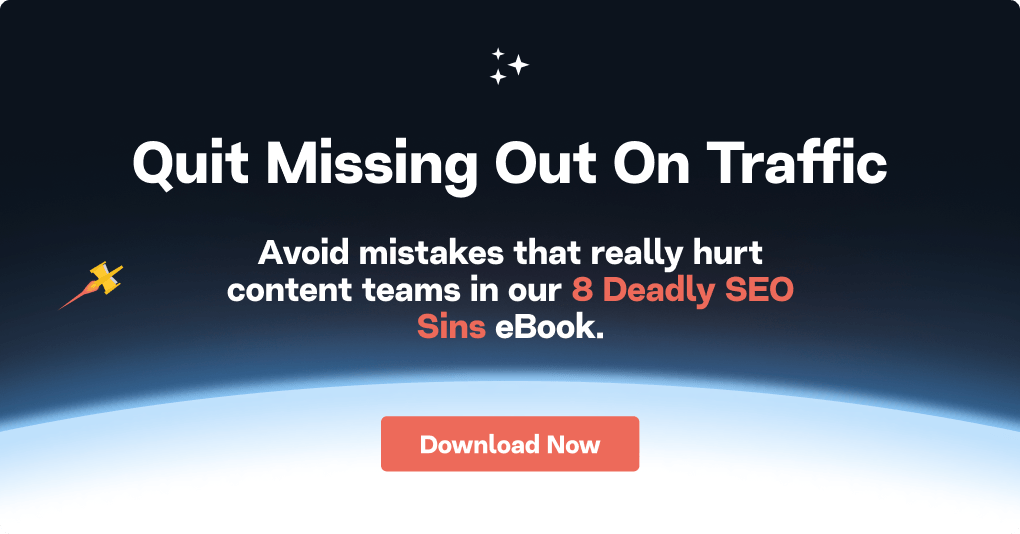Why Most SEOs Get Intent Fracture Analysis Wrong
Some content marketers truly believe that intent fracture doesn’t matter. Others are blissfully unaware that it even exists.
Although I often talk about intent fracture, it’s so important that it needs repeating. Because if you’ve never done anything with intent, wrapping your brain around it can be hard.
But I’ll give you two reasons why intent fracture matters.
One, the output of fractured intent analysis frequently leads to errors. Two, there’s a common mistake that content teams make that relates to this.
So what do I mean by intent fracture?
When a Searcher types “CRM” in Google, it’s faced with a problem.
- The term is ambiguous and could stand for any one of 127 possibilities, including customer relationship management.
- There’s an intent fracture because it’s not clear what aspect of CRM you’re interested in. You could be looking for a guide to CRM. I could be an expert. I could be a beginner. I could be looking for a comparison of software packages.
They provide ways of refining your query:
- People Also Ask
- Recommendations for a additional keyword variants
But they also have to provide a search result, even if they’re not sure what the right result is. So they show what we refer to as Google’s favored intent. If it’s a fractured query, most of what they show connects to this one use case or user desire.
But they’ll show some results that match other intents as well. So you might see:
- What is a CRM?
- The guide to CRM
- The stock ticker for Salesforce
- The Salesforce home page (because they have one of the best SEOs in the world).
- One of the other 126 things that the acronym CRM stands for
So what does this mean?
You don’t have a clear understanding of the competition for this search term. And you don’t actually have the ability to compete for all the spots in that result.
I’ll let that one sit for a second.
But understand this. With that one page you create, you’re potentially competing with only three or four other first page competitors.
And then there’s the error of looking at a unified intent. What if there are other things that Google is just not showing, but they are relevant to your business?
This is critical to understand so let me explain it using an example.
Let’s say I’m trying to rank for “what is CRM” and the first page of search results is all definitions. Does that mean that I can just rank on page one? If I just write a definition?
Absolutely not.
A huge infrastructure of content about CRM at all stages of the buy cycle is frequently required. That’s what I’ll need for the privilege of ranking for the definition, in most cases.
The myth here is that you can look at a search result page in isolation. You don’t need to care about any of the other content on the site you’re competing against. For consistent success, all you need to do is copy the competition and make it “better,” which often gets confused with making it longer.
Saying that when you see a certain type of page in the search results, you just need to build the same, is an absolute disaster. It only works in special situations.
Apply this “carte blanche” and you end up creating a whole bunch of pages that have no connective tissue. You’re not building the way an expert would. You’re not building like the person who wrote the book would, all you’re doing is copying other people.
That is one of the biggest mistakes that can be made with intent fracture.
Here’s one way to approach this. Build out a list of keywords that you heavily depend on for traffic or leads. Keep growing and doing better on this list of words for your business. Keep tabs on those search results, understanding if it’s unified intent or if there’s a mix because you’re going to have to account for that.
It might mean you have to build 10, 20, 50 pages to support that marquis page. Building up that wall with a cluster of content makes you less susceptible to invasion.
What you should do now
When you’re ready… here are 3 ways we can help you publish better content, faster:
- Book time with MarketMuse Schedule a live demo with one of our strategists to see how MarketMuse can help your team reach their content goals.
- If you’d like to learn how to create better content faster, visit our blog. It’s full of resources to help scale content.
- If you know another marketer who’d enjoy reading this page, share it with them via email, LinkedIn, Twitter, or Facebook.
